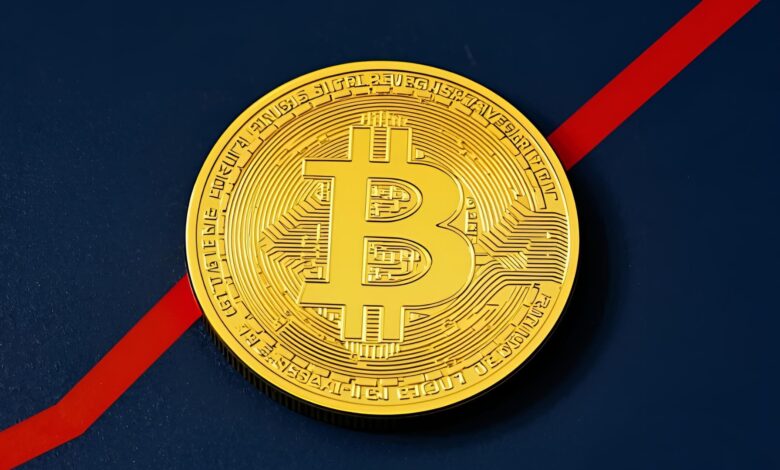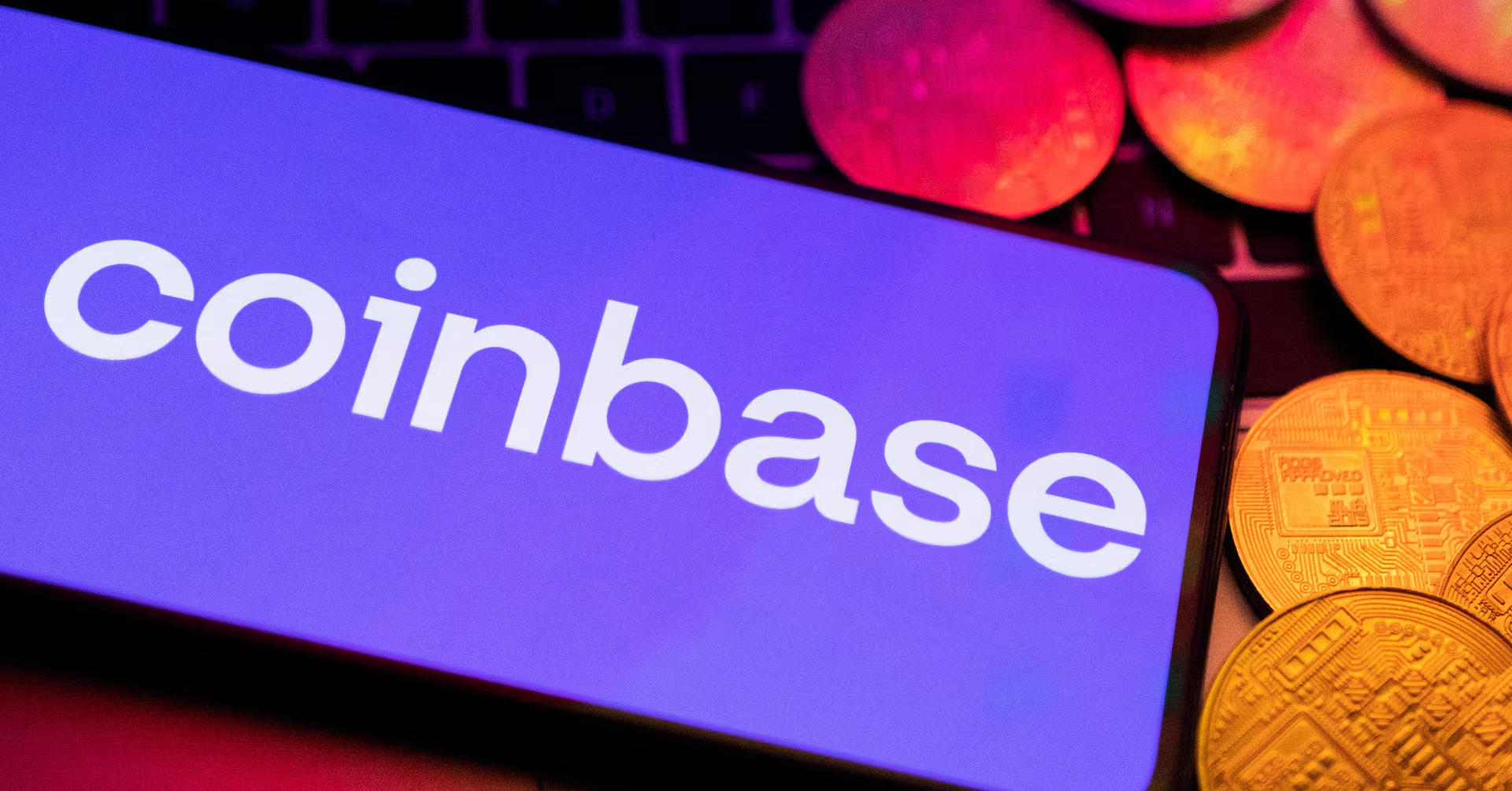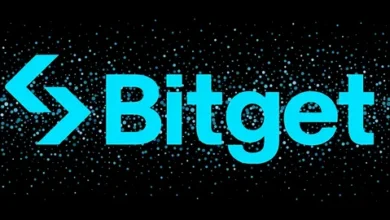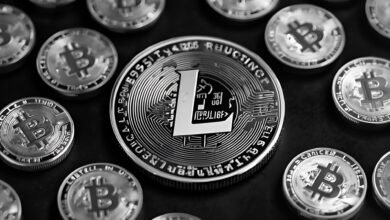
Coinbase’s 460% Surge in Cardano Reserves XRP Tanks
In a striking turn of events on the crypto custody front, Coinbase has witnessed its Cardano (ADA) reserves explode by over 460%, even as its holdings in XRP have suffered a dramatic collapse. This contrast reflects shifting investor sentiment, evolving institutional strategies, and potential regulatory cues that may reshape the balance among major altcoins. While Coinbase’s ADA reserves are growing at an accelerated pace, its XRP inventory has been pared back to a fraction of what it once held.
This article delves into the full narrative: how and why Coinbase’s Cardano reserves surged, what’s fueling that growth, what precipitated the plunge of its XRP holdings, and what these contrasting moves signal for the broader crypto landscape. We’ll unpack technical, financial, and strategic angles—including institutional flows, wrapped tokens, ETF anticipation, and network fundamentals—and then examine the implications for ADA, XRP, and Coinbase itself.
By the end, you’ll have a clearer picture of why Coinbase now seems to be doubling down on Cardano while quietly de-risking its XRP exposure, and how this could affect future price action, investor confidence, and custody trends.
The Surge in Coinbase’s Cardano Reserves
Wrapped ADA (cbADA) and Basis of the Reserves Spike
Coinbase’s explosive growth in Cardano reserves is closely tied to the wrapped ADA (cbADA) initiative on its Base layer. The platform backs each cbADA token with on-chain ADA holdings in its reserve, and as the cbADA supply has expanded, Coinbase’s ADA reserve has ballooned in tandem. According to reports, the supply of wrapped ADA on Base has grown from about 1.7 million ADA to 9.56 million ADA, reflecting a 462% increase in the reserve backing.
That growth is not incidental. As DeFi usage on Base ramps up, users increasingly convert ADA into cbADA to participate in yield, arbitrage, or cross-chain strategies. Coinbase’s custody arm becomes the counterparty for those wrapped tokens, thereby accumulating larger ADA reserves.
In short, the mechanics of wrapped tokens force the reserve to expand proportionally with demand. The fact that the ratio has leapt so dramatically suggests a fast rise in demand for ADA-based DeFi and wrapped utility.
Institutional Confidence and ADA’s Narrative
Beyond wrapped token mechanics, the dramatic increase in ADA reserves may reflect a deeper belief in Cardano’s evolving narrative, especially among institutional investors. Analysts note that as Coinbase doubles down on ADA, institutions appear to be revisiting Cardano as a serious contender in the blockchain ecosystem.
Some of the key drivers for institutional interest include Cardano’s emphasis on sustainability, formal methods, and peer-reviewed development, which contrast with more speculative networks. Moreover, Cardano’s prospective inclusion in regulated products, possible ETF filings, and alignment with national crypto reserve discussions have added legitimacy to ADA’s narrative.
Finally, when major exchanges and custodians increase stacking of an asset, it serves as a signal to the market that ADA is being treated more like a “must-hold” infrastructure token rather than a fringe altcoin. That can create a self-reinforcing loop: more demand attracts more reserve accumulation, which in turn signals confidence to others.
Timing and Correlation With XRP Reductions
One of the most striking elements is the timing: Coinbase’s ADA reserves spiked just as its XRP holdings were being slashed. The juxtaposition is not purely coincidental. Some observers suggest a shift in internal allocation or custodial priorities within Coinbase’s reserve strategy.
By reallocating capital from XRP to ADA, Coinbase may be leaning into what it sees as higher-potential or less regulatory risk assets. It’s also worth noting that ADA’s rise correlates with broader altcoin momentum in the crypto market—so Coinbase may be riding external tailwinds while adjusting its internal exposures.
Why Coinbase’s XRP Holdings Plummeted

A Near 90% Reserve Decline Over Months
On the flip side of Coinbase’s ADA story is its dramatic exodus from XRP. Data from on-chain trackers and industry analysts show that the exchange’s XRP reserves have collapsed—from approximately 970 million XRP in June 2025 down to 99 million by mid-September—a drop nearing 90%. Some trackers indicate that ultimately the public cold wallets representing Coinbase’s XRP holdings dropped to virtually zero, with only a handful of addresses still active holding marginal amounts.
Moreover, Coinbase has fallen out of the top 10 exchanges in terms of XRP holdings, a significant demotion for what was once one of the larger custodial holders of XRP. In dollar terms, the exodus amounts to more than $2.8 billion worth of XRP leaving Coinbase’s active holdings over just three months.
Such a drastic contraction raises the question: why would Coinbase shed so much XRP in such a short time?
Institutional Accumulation and Custody Rotation
One of the leading explanations is that much of the XRP hasn’t been sold to retail traders but moved to institutional or private custody channels. Analysts argue that large asset managers, OTC desks, or strategic holders are quietly accumulating XRP off-exchange to avoid price slippage or scrutiny.
In this scenario, Coinbase may simply be reallocating from its own hot or cold wallets into private vaults on behalf of large clients. The net visible balance shrinks, but the assets may still be within its broader ecosystem under more discreet custody. By minimizing the on-chain footprint, those institutions avoid signaling their accumulation to the public.
Another possibility is purposeful rotation: shifting holdings from XRP to ADA or other assets viewed as more strategically favorable or less regulatory-exposed. Coinbase might see better upside, lower systemic risk, or more usage in ADA compared to XRP at this juncture.
Regulatory Risk, Token Narrative, and Liquidity Considerations
XRP has always existed under a cloud of regulatory uncertainty, particularly in the U.S., due to the SEC’s stance toward Ripple Labs and ongoing litigation. For a high-profile custodian like Coinbase, maintaining large XRP reserves may present reputational or compliance risks. Divesting from XRP could reflect a de-risking posture in light of potential regulatory constraints.
Liquidity concerns may also play a role. Maintaining XRP reserves ties up capital in an asset that—while liquid—may not offer the same growth narrative or yield opportunities as other altcoins in high demand.
Finally, the shift might also reflect market sentiment: if user demand, trading volume, and ecosystem momentum for XRP appear less promising relative to ADA or other altcoins, Coinbase’s balancing act could favor reallocating resources away from XRP.
Implications for ADA, XRP, and Coinbase’s Strategy
What This Means for ADA (Cardano)
The surge in Coinbase’s ADA reserves is a bullish sign for Cardano. It suggests that demand for ADA—especially in wrapped and DeFi use cases—is rising, and that institutional confidence is growing. As more ADA is locked as collateral or wrapped, the supply available for pure speculative trading may shrink, which could lend upward pressure on price.
Furthermore, ADA now appears to be treated more like a foundational infrastructure coin rather than a speculative token. Such reclassification can attract more stable capital allocations, long-term holders, and index-based investors. The signal from a major exchange accumulating ADA is potent in reinforcing that narrative.
However, challenges remain. ADA must sustain developer activity, ecosystem growth, and real-world adoption to justify continued demand. If wrapped utility cools or DeFi flows shift elsewhere, the momentum could prove transient.
Consequences for XRP
Coinbase’s withdrawal from XRP reserves has multiple implications. First, the loss of a major custodian’s visible holdings may reduce XRP’s liquidity and influence in certain markets, particularly in U.S. exchange flows. That could make price swings more volatile.
On the flip side, the move could indicate that large players are moving to accumulate XRP privately, which might be bullish if and when those holdings are deployed. The scenario suggests that XRP could be entering a phase of consolidation under institutional hands, and when demand reactivates—perhaps via ETFs—the supply shock might amplify gains.
That said, reduced exposure from a heavyweight like Coinbase can also weaken confidence for retail traders who gauge sentiment by institutional allocations. If Coinbase is seen as exiting, some might interpret that as a waning belief in XRP’s near-term potential.
Coinbase’s Strategic Posture and Risks
From Coinbase’s perspective, this shift signals a reorientation of its custodial and reserve strategy. By leaning heavily into ADA, the exchange bets on Cardano’s future growth, wrapped DeFi demand, and institutional pickup. At the same time, by shedding XRP exposure, Coinbase insulates itself from regulatory ambiguity and concentrates capital in assets viewed as more promising.
However, this strategy has risks. If ADA fails to maintain growth, or if regulatory or technological headwinds hit Cardano, Coinbase may be over-leveraging into an altcoin with uncertain loyalty. Similarly, offloading XRP too aggressively might alienate segments of XRP’s strong, vocal community.
Moreover, the shift raises questions about liquidity, counterparty risk, and price signaling. Large on-chain movements are always visible to markets, which could create momentum reflexes—both positive and negative—that Coinbase must manage.
Broader Trends and Market Context

The Altcoin Rotation Phenomenon
What we are witnessing between ADA and XRP is part of a broader phenomenon known as “altcoin rotation.” As capital chases momentum, assets that get institutional or exchange backing can attract significant inflows, while those perceived as underperforming drop out of favor. In that light, Coinbase’s rebalancing is a microcosm of capital flows across the crypto sector.
As the broader crypto market cycles through phases, tokens like Solana, Avalanche, or others may capture attention next; ADA’s current spotlight may not last forever. But for now, ADA is the beneficiary of this rotation.
Regulatory Tailwinds and ETF Outlook
The expectations of ETFs and regulatory clarity are an important backdrop. For XRP, a spot ETF or favorable rulings in the SEC case could unleash pent-up demand. That may be part of the reason institutional actors are quietly accumulating off-exchange.
Conversely, if ADA gains traction in regulated products or reserve discussions, it strengthens its legitimacy. The fact that ADA has been referenced in U.S. Crypto reserve proposals and national policy dialogues lends weight to its positioning. In effect, Coinbase might be positioning for the eventuality that ADA plays a greater role in regulated institutional vehicles, while distancing from the uncertainty around XRP’s classification.
Signaling, Sentiment, and Self-Reinforcing Loops
Large visible moves like Coinbase’s reserve shifts send powerful signals to the market. By visibly ramping ADA and reducing XRP, the exchange communicates its own “vote” among altcoins. That can influence sentiment, attract momentum traders, and create a self-fulfilling loop of inflows into ADA and outflows from XRP. For retail investors, these signals matter. When a major exchange accumulates a token, it legitimizes it in the eyes of many. Conversely, shedding a token may sow doubt—even if the reasons are internal or strategic.
Also Read: Coinbase Expands Further in Europe
Conclusion
The unfolding story at Coinbase—a meteoric rise in its Cardano reserves. A collapse in its XRP holdings is a dramatic microcosm of shifting tides in crypto custody, institutional sentiment, and token narratives. On one hand. ADA is being embraced and elevated, backed by the mechanics of wrapped token infrastructure and growing institutional confidence. On the other hand, XRP appears to be quietly transitioning into private institutional hands or being deprioritized amid regulatory uncertainty.
For ADA, this is a bullish signal—reserves growth, demand for wrapped usage, and custodial trust are reinforcing its legitimacy. For XRP, the trajectory is more ambiguous: reduced exchange exposure weakens visible liquidity and confidence. But if off-exchange accumulation is real, it could set the stage for future upside once institutional demand is unleashed.
Ultimately, Coinbase’s moves reflect not just technical reallocations. But a bet on where the future of crypto infrastructure and regulation is heading. Whether that bet pays off will depend on market cycles, regulatory outcomes, and ecosystem resilience. For investors and observers, this is a moment to monitor closely.
FAQs
Q: Why did Coinbase’s Cardano reserves surge so dramatically?
The surge is largely driven by the introduction and growth of wrapped ADA (cbADA) on Coinbase’s Base network. As CBADA issuance expands, Coinbase must back each wrapped token with real ADA in custody, forcing the reserves upward. That mechanical growth is being amplified by rising user demand and institutional interest.
Q: Did Coinbase sell all of its XRP holdings?
Not necessarily. The public cold wallet data shows a near-total visible outflow, but many analysts believe. Those XRP tokens were transferred to institutional or private custody behind the scenes. Thus, they may still be under Coinbase’s broader custody umbrella, but not in visible exchange wallets.
Q: What does this mean for ADA’s future price?
Increased reserve accumulation and institutional backing are bullish signals, potentially reducing circulating supply and attracting longer-term holders. However, ADA must sustain utility, development, and adoption to justify continued upward price movement. The moves by Coinbase deepen confidence in ADA’s infrastructure narrative.
Q: Is XRP doomed now that Coinbase is reducing exposure?
Not necessarily. The move may simply reflect internal reallocation or regulatory caution, not a wholesale loss of faith in XRP. If institutional accumulation is indeed occurring out of public view, XRP may still benefit in the future. However, less exchange liquidity and visibility now could increase volatility and sentiment risk.
Q: What should crypto investors do with this information?
Use this as one data point in a broader evaluation. Investors may consider monitoring on-chain flows for ADA and XRP. Watching for ETF developments and assessing whether Coinbase’s allocation aligns with their own convictions. It’s not advisable to follow blindly, but to thoughtfully adjust exposures in light of these institutional signals.







